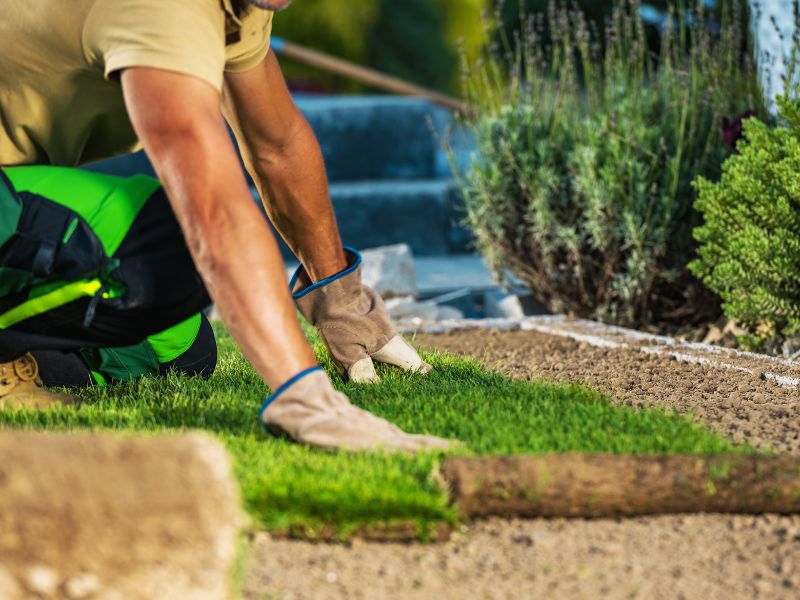A well-designed and thought-out landscape not only enhances relaxation and provides the perfect spot for family bonding time, but it also boosts curb appeal and property value of a home. However, it’s easy to quickly become overwhelmed by all the minutiae and choices involved with landscaping, so it’s a good idea to hire a professional landscape designer to be your guide.
The best landscape design companies offer design, installation and maintenance services to make your life easier. They can help turn your vision into the perfect outdoor oasis for your family. With so many considerations like cost, local climate, soil conditions, plant choices, sun exposure and irrigation – not to mention safety of your children and pets – it’s critical that you find the best pro to fit your needs. The following considerations will help you when choosing and working with a landscape designer.
Include Enough Open Space for Play
Nature connection is incredibly beneficial to children’s health and happiness, so ensuring there are enough play areas and open space for them to run around should be top priority when designing a kid-friendly yard. According to Allison Messner, founder and CEO of Yardzen, an online landscape design service, kids’ play space is one of the top design requests made by their clients. Messner encourages parents to leave room for play in the design to build something unique for their children. “When working with your designer, ask how you can incorporate organic materials into the play area to integrate into the overall design. Hills make perfect backdrops for integrating slides, and steps to a treehouse can become a rock-climbing wall as the kids grow.” Other ideas to encourage play include a swing set, treehouse, water table, tree swing, sand box, playhouse and sport zone.
Choose the Right Plants
Be mindful that not all plants are safe for children and pets. Indeed, there are poisonous berries and plants and those with sharp edges, thorns, stinging leaves and spikes that could be harmful if touched or consumed. There are also plants that could trigger an allergic reaction. Discuss these concerns with your landscape designer so they can plan out the best vegetation for your yard. Some species to avoid include oleander, foxglove, holly, barberries, angel trumpet and roses.
Avoid Hardscape Dangers
Work with your landscape designer to choose safe yet attractive hardscape features like rocks, pebbles, boulders and pavers. “Parents of young children should ask their designer about safety considerations such as surfaces and pathways that are child-friendly,” suggests Kathy Jentz, editor of Washington Gardener magazine and host of the GardenDC podcast. She recommends a grade of shredded wood chips called “playground mulch.” Be sure to speak with the designer about the safety aspects of each hardscape option and the best places for them to be installed.
Make Food Fun
Incorporating a vegetable garden to plant produce, such as an accessible one with a raised bed, can be a real winner for kids. They will love planting seeds, digging in the dirt, watering and ultimately tasting what they helped grow. “A small vegetable and herb garden can be put in for families to grow food together,” notes Jentz. “Kids tend to eat more healthy foods when they are part of the growing process.” She also suggests talking to the landscape designer about adding some fruit-bearing trees to harvest from for many years to come.
Attract Wildlife
Children love animals, so be sure to explore ways to attract wildlife to your yard. The landscape designer may have creative ideas to help your kids engage more with animals, such as incorporating a butterfly garden, koi pond or birdfeeders into the landscape plan. Additionally, look for native plants that appeal to favorites like hummingbirds and butterflies.
Fence Them In
Safety should always come first, which includes building a fence around the yard as part of the landscaping plan. If you have a pool, there needs to be a childproof fence surrounding it. Before committing to any water feature, such as a pond or fountain, talk to your landscape designer about the pros and cons and safety protocols available.
Balance Your Budget
Finally, each landscaping project comes with a price tag that varies depending on size and complexity. Typical landscape design fees end up being thousands of dollars, with hourly rates generally ranging from $50 to $150 and design plans costing anywhere from $300 to $15,000. Plus, materials and labor fees can quickly add up. Determine a realistic budget and work with the designer to stay within your cost goals.
Final Thoughts
Your dream landscape is just around the corner by following these guidelines and asking the right questions. To ensure a positive working relationship with your landscape designer, Jentz also suggests, “When seeking a landscape designer, parents can ask for referrals from other parents and also ask designers to show them past projects working with families.” Finally, think about getting the kids involved in the process to make this a family project. “Children can be brought into the design process and asked about their interests – perhaps they’d like a faerie (miniature) garden or one that attracts pollinators,” said Jentz.

